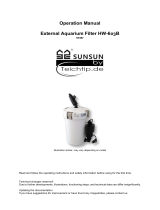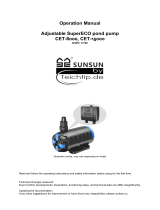© by WilTec Wildanger Technik GmbH Item 60244–60251, 61728–61735 Page 5
http://www.WilTec.de
http://www.aoyue.eu 04 2022-1
http://www.teichtip.de
• By following a few simple rules for maintaining your solar cover, you can ensure that your solar
and swimming pool cover will last longer.
Maintaining the ideal chlorine value:
Remove the solar cover from the pool when chlorinating pool water and before shock disinfection to
prevent chemical damage. Make sure that the water is balanced.
• The pH value (potentia Hydrogenii) is ideal at a value of 7.4 (tolerance range: 7,2–7,8). If
the pH is too low, the water becomes very corrosive. If the pH is too high, the water becomes
alkaline.
• The lime hardness (CH) is ideal at a value of 275 ppm (tolerance range: 150–400 ppm). If
the CH value is too low, the water becomes very corrosive. If the CH value is too high, the water
becomes alkaline.
• The total alkalinity (TA) is ideal at a value of 100 ppm (tolerance range: 80–120 ppm). If the
TA value is too low, the water becomes very corrosive. If the TA value is too high, the water
becomes alkaline.
• The proportion of FC (free chlorine) must not be higher than 4.0 ppm (4 parts of chlorine to 1
million parts of water, corresponds to 4 mℓ per litre). The ideal value is 2.0 ppm, tolerance range
between 1.0–3.0 ppm. The ideal value for CC (combined chlorine) is 0 ppm and should not ex-
ceed 0.2 ppm.
• If “shock chlorination” is carried out in a swimming pool, make sure that the cover is completely
removed from the surface of the water and only put back on when the chlorine value has re-
turned to normal.
• Too high a chlorine value and unbalanced water increase the corrosive effect on the pool cover
and lead to premature aging, bleaching, discoloration, and crystallization of the chemical resi-
dues on the surface of the cover.
• In its natural state, chlorine is gaseous, if it is added to the water as an additive (solid, liquid, or
gaseous), it automatically changes back to its natural state (gaseous), rises in the water and is
then evaporated to the atmosphere. When using a bubble cover, there is no evaporation, and
the chlorine circulates in the water, which is caused by the filter system and pool pump. This is
how the water is purified. When the cover is in place, the chlorine content in the water increases.
To avoid an increased chlorine concentration, both the content and the addition must be re-
duced by 30–60 %. The amount of chlorine in automatic chlorine dispensers, saltwater chlorine
systems and manual addition should be reduced to the appropriate value to maintain the correct
chlorine content and water balance.
• The pump and filter should be used during the warmest part of the day between 10 a.m. and
4 p.m. with a solar or energy-absorbing cover placed over the pool. The sun heats the water
through the solar cover, at the same time the cover absorbs heat and transfers it to the water.
The warmer water rises with the chlorine gas, while the water below stays cool. The heat is
released and the chlorine circulates again in the water. The concentrated chlorine mixes in the
warm and cold water and cannot attack the cover in this way. Thus, the solar cover is used
optimally and its service life is increased.
• When the cover is placed on the pool and there is sunshine, the temperature should not exceed
40 ℃, as this can reduce the life of the material. Do not expose the cover to direct sunlight when
it is not in use. Overheating the cover can damage the air chambers.
Protecting the cover
• When not in use, cover the cover with a white cloth so that it is not exposed to direct sunlight.
• All covers must be stored in the shade and out of direct sunlight. Never leave the cover folded
or rolled up in direct sunlight. The heat generated by the sun is much increased, thus intensifying
the decomposition of the material. The consequences are not necessarily immediately appar-
ent, but they can be very serious.
• For example, a greater concentration of heat builds up in the material, causing the air in the
chambers to expand and tear the coated area apart, because of which the little air chambers










